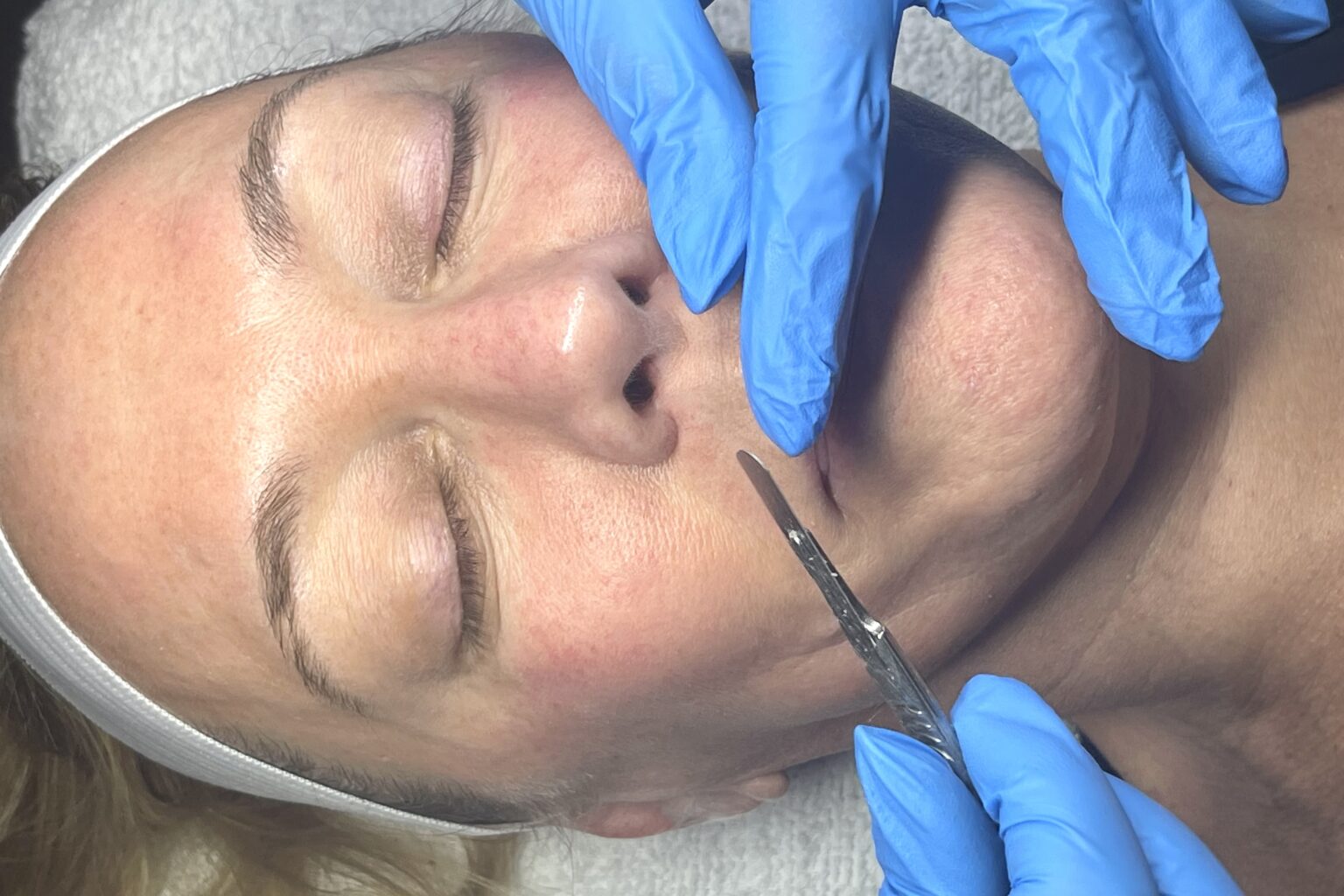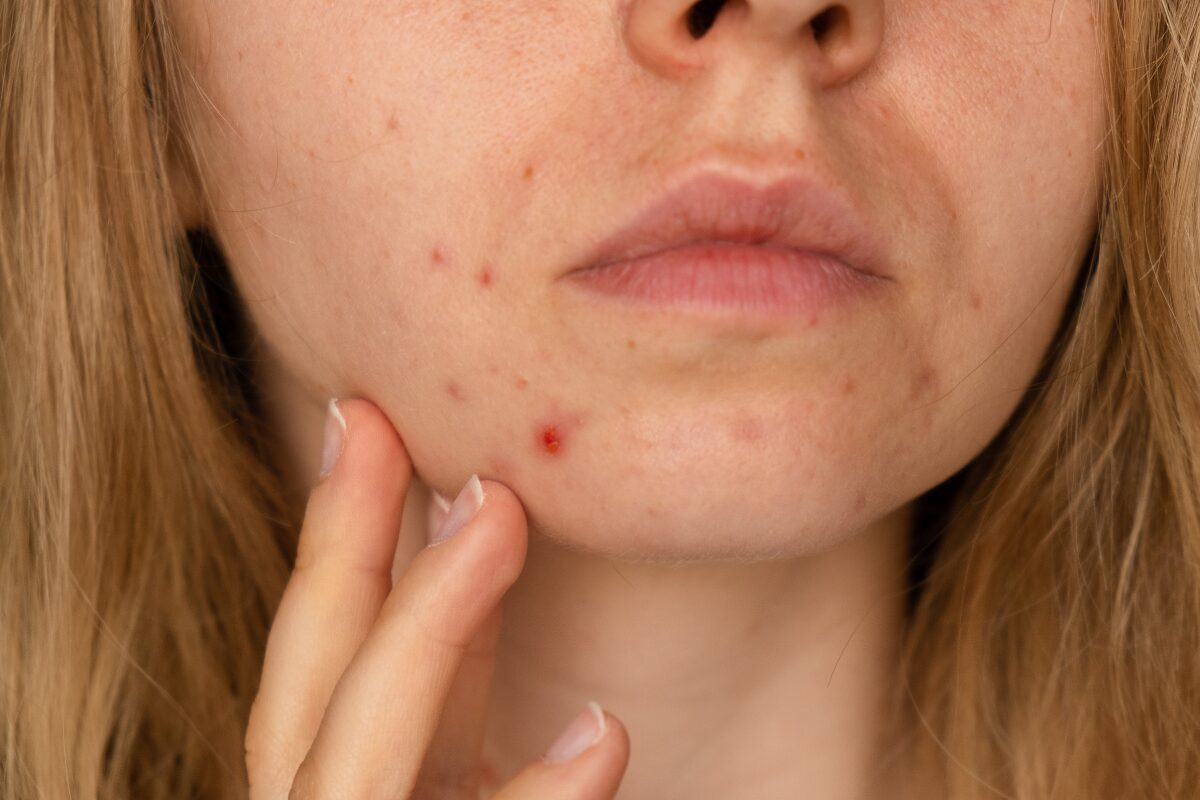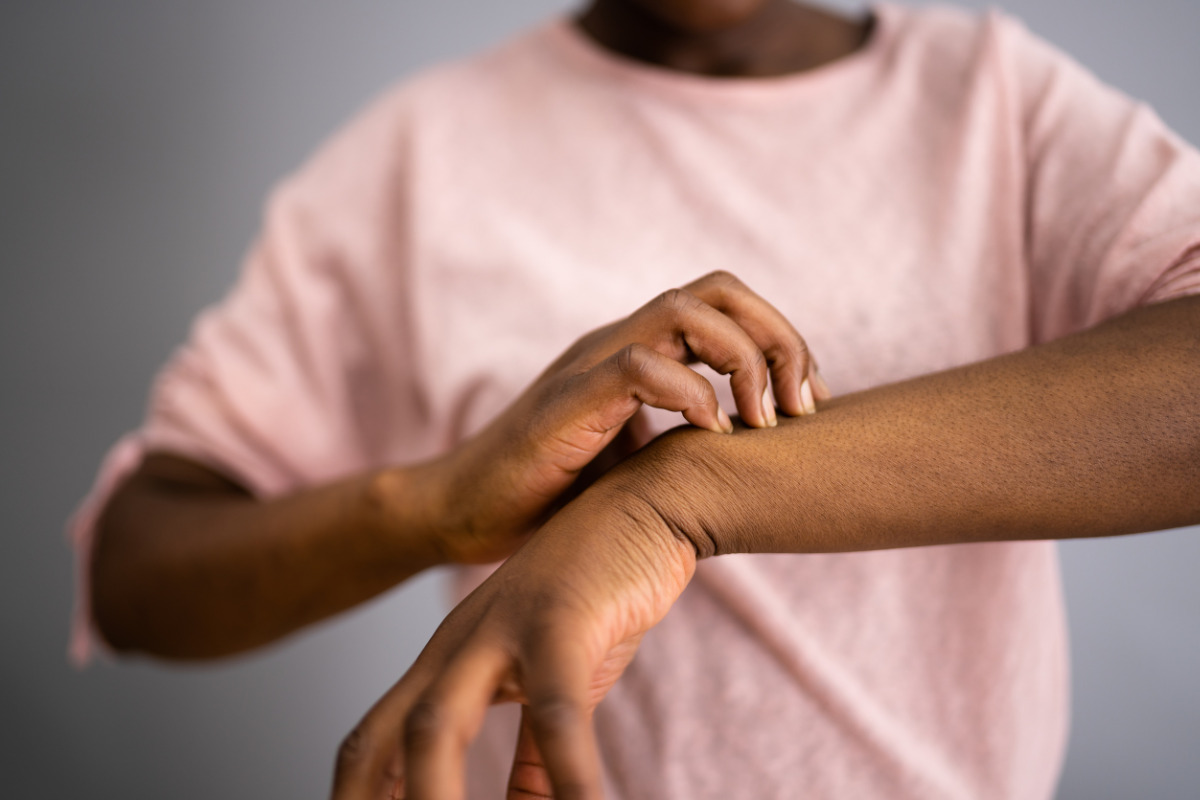Dealing with Menopausal Facial Fuzz

The growth of facial hair during menopause is a frustrating and unwanted side effect. It’s a common occurrence that studies have shown happens to a large number of women as they move from perimenopause to menopause due to the change in hormones.
Just because you’re growing hair on your chin, though, doesn’t mean you have to keep it around. There are, fortunately, many ways to deal with facial hair during menopause and perimenopause.
What Causes Facial Hair to Increase in Menopause?
During menopause, hormones are changing, and as research notes, estrogen levels are decreasing. Estrogen, the female hormone, keeps skin soft and supple and hair full and bouncy. As estrogen decreases in menopause, testosterone (the male hormone that women also produce) also fluctuates, meaning it can cause the growth of facial hair.
Can I Prevent Growing Facial Hair in Menopause?
There isn’t necessarily a guaranteed way to prevent facial hair, though hormone therapy could help. However, experts don’t recommend hormone therapy for facial hair — this option is only available for moderate to severe symptoms like hot flashes and vaginal dryness.
If you are interested in learning more about hormone therapy, you can speak to your healthcare provider about the risks and benefits for you or use the hormone therapy decision support tool developed by Mayo Clinic menopause experts in the Midday app.
Treatments for Unwanted Facial Hair
There are several treatments you can turn to if you’re finding unwanted facial hair, so it should be easy to find one that suits your lifestyle in terms of how often you have to do it and how much you’ll spend.
Laser Removal
Laser hair removal is a popular choice for getting rid of facial hair, as it’s a great treatment for darker, more coarse hairs. This treatment is done by using a laser to target the hair follicle, which causes the hairs to fall out and eventually stop growing.
This procedure takes a few rounds and can cost upwards of $200 each time (the price will vary depending on where you live). The beauty of laser hair removal is that once you’ve zapped all your hairs, in theory, they won’t come back. Essentially you’ll spend the better part of a year targeting these hairs, and then you won’t have to worry about it again (other than perhaps some maintenance once a year or so).
This is one of the more expensive treatments for dealing with facial hair, though, which makes it not the best option for everyone. It can easily cost over $1,000 in just a few short months.
IPL
IPL, or Intense Pulsed Light, is similar to laser hair removal without using a laser. Instead, it uses light in a similar process of damaging the hair follicle and causing the hair to stop growing. Similarly to laser, you’ll also need to do this process a few times before you’ll see lasting results (and will still probably need maintenance). Unlike laser, though, IPL is something you can do at home with your own IPL machine. These can run anywhere from $150 and up, and investing in a quality product is a good idea here.
The drawback of IPL, however, is that it doesn’t do well with Black skin. Because the light targets the pigment in your hair strands, it needs to see a marked difference between the color of the hair and the color of the scalp. Dark hair on a dark scalp doesn’t respond well to the IPL machine.
Electrolysis
Electrolysis is a slightly more invasive hair removal process involving a wire inserted into the hair follicle to destroy it. This is done with an electric current and a tiny needle. Just like laser and IPL, electrolysis takes several appointments to achieve total hair removal. This process, though, takes longer than others — upwards of a year. However, everyone’s body and hair are different, so your hair-removal journey could be longer or shorter.
While you can get an electrolysis machine to do your hair removal at home, going to a licensed professional is a safer, more efficient option. Though this can get expensive — especially if you’re going for treatment once a month for over a year — it will have a permanent effect once done. Depending on where you live and which professional you choose to see, you could pay anywhere from $25 to $100+ for each treatment.
Dermaplaning
Dermaplaning is a temporary fix for your facial hair. With dermaplaning, a razor exfoliates your face, removing dead skin cells and hair. This is a closer touch than just shaving with a razor and can last longer than a regular shave.
Dermaplaning is done by a licensed professional and can be repeated as often as needed. Because this is not a permanent fix, if you want to keep your smooth face, you’ll need to have dermaplaning sessions regularly.
If you have sensitive skin, this may not be the best treatment for you, as the razor can irritate the skin. The price can vary greatly depending on where you live and who you choose to see, but it could be upwards of $150 per visit.
Vaniqa
Vaniqa is another temporary treatment for facial hair. This cream helps to slow the growth of the hair rather than aid in its removal. This is something you’d probably use in conjunction with one of the other treatments, as Vaniqa will help cut back on how often you’d need to go through a removal process. To use it, you simply rub it on the skin where you want the hair removed and leave it on for four hours before washing it off.
A setback of Vaniqa is that it is a medicated cream, so not only will you need to go through your healthcare provider for this, but there is currently no generic product, which means it can be pricey.
Depilatories
Depilatory creams, like Nair, can be used on facial hair to melt the hair away. These products use chemical compounds containing sodium and carbon to target the protein in the hair and break it down so you can wipe it away. It sounds much scarier than it is, though it is important to do a small patch test before using a depilatory.
When looking for a depilatory, make sure you select one that targets facial hair, as these tend to be more gentle on your skin. They generally need to be done every few days to maintain smooth skin (much like shaving) but don’t require going at your face with a blade. These tend to be pretty reasonably priced — under $10 a bottle — so they are a good option for those on a budget.
Shaving
When in doubt, shaving is always an option. You can shave your face much like you shave any other skin on your body, though you’ll want to take care of the delicate skin so as not to cut yourself. Use a hydrating shaving cream to moisturize your skin as you go, and finish with some hydration as well.
Chances are, shaving your face won’t add any cost to your weekly or monthly hygiene budget because you probably already have what you need ready. Over time, you might go through shaving cream and razors more quickly, but it probably won’t be enough for you to notice the price.
While shaving your face frequently can be annoying, it is a cost-efficient option for dealing with menopausal facial hair. This is also a way to deal with the hair between other treatments or if you’re saving up to do something like laser hair removal.
Hedy Phillips is a freelance lifestyle writer who specializes in mental health, overall wellness, and healthy lifestyles. In her 10+ years as a journalist, she’s been an editor at POPSUGAR and PEOPLE, and her bylines can also be found in CNET, Reader’s Digest, InStyle, and more.
Sign up for more unique women’s health content
By submitting this form, you agree to the Lisa Health Privacy Policy and Terms of Use


